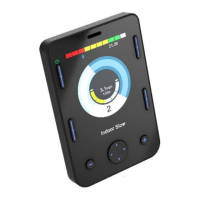2.8 PORTS 1 / 2 – SWITCHES
2.8.1 USER SWITCH
This sets whether the Omni2 is expecting a normally-open or normally-closed User Switch.
The programmable options are Normally Open or Normally Closed.
If the setting does not match the switch type, then the Omni2 will not operate correctly.
WARNING (HP, IN)
For a truly fail-safe system, Curtiss-Wright recommend that a User Switch incorporating a resistor network is fitted. Refer
to User Switch Detect for further details. If one of these is unavailable, a normally-closed User Switch should be used. This
ensures that if the switch becomes accidentally disconnected, the powerchair will default to a stop condition. If a normally-
open switch is used, the responsibility for that decision lies with the healthcare professional. Curtiss-Wright accept no
liability for any losses resulting from the use of a normally-open User Switch.
2.8.2 SWITCH DETECT
This sets how the Omni2 will behave if the User Switch becomes disconnected.
The programmable options are On, Off and Limp.
If set to On and the User Switch becomes disconnected, then the Omni2 will trip.
If set to Off and the User Switch becomes disconnected, then the Omni2 will try to operate normally, even though the User
Switch is disconnected.
If set to Limp and the User Switch becomes disconnected, then the Omni2 will allow drive, but at a reduced speed, and will
issue visual and audible warnings.
WARNING (HP, IN)
Because a disconnected User Switch means there is no emergency-stop function, Curtiss-Wright recommend that Switch
Detect is always set to On. Curtiss-Wright will accept no liability for any losses resulting from any other setting of this
parameter.
2.8.3 9-WAY DETECT
This sets whether the Omni2 will expect a ‘detect-link’ in a SID connected to the 9-way D-type.
There are two settings, On and Off.
If set to On, the Omni2 will expect a ‘detect-link’ and if one is not present will trip.
If set to Off, no ‘detect-link’ is required.

